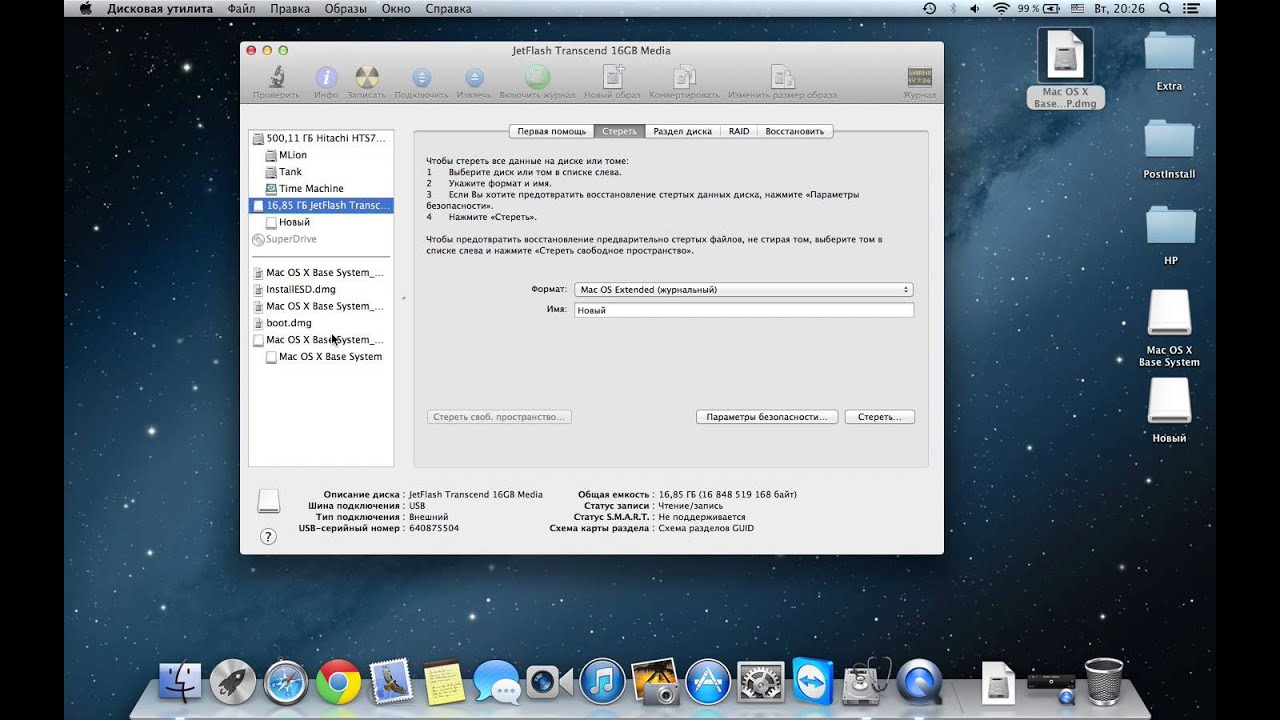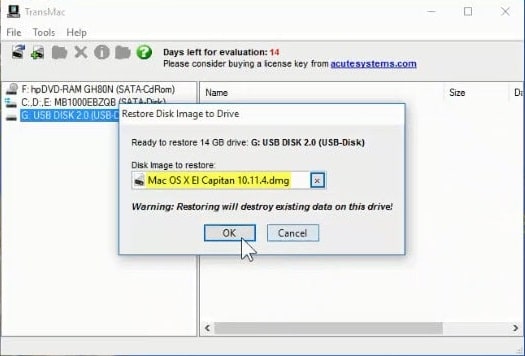El Capitan Bootable Usb From Dmg
Adobe Photoshop Cs6 Dmg File Dmg To Bootable Usb Mac Transmac How To Use Dmg File In Windows 7 How Do I Image El Capitan Dmg Onto Usb Wow Not See Dmg Numbers El Capitan 10.9.1 Os X Dmg Installer Gameboy Pi China Dmg Raspberry Anthem Does Weapon Dmg Effect All Weapins Download Xcode Dmg File For Mac. Bootable USB Installers for OS X Mavericks, Yosemite, El Capitan, and Sierra First, review this introductory article: Create a bootable installer for macOS. Second, see this How To outline for creating a bootable El Capitan installer. Bootable USB Installers for OS X Mavericks, Yosemite, El Capitan, and Sierra First, review this introductory article: Create a bootable installer for macOS. Second, see this How To outline for creating a bootable El Capitan installer.
Making the installer drive. Connect to your Mac a properly formatted 8GB (or larger) drive, and rename the drive Untitled. (The Terminal commands I provide here assume that. Make sure the El Capitan installer (or at least a copy of it), called Install OS X El Capitan.app, is in its default. Apr 03, 2016 In the following instruction, we show specifically how to make a Mac OS X bootable installation USB from El Capitan.DMG, Yosemite.DMG, Maverick.DMG or any OS X older versions on Windows PC. This is cool for Windows users who want to install Mac OS X on their PC, but useful for Mac users when their Mac is not working and needs to be re-installed.
After the copy of 'Packages', 'BaseSystem.chunklist', and 'BaseSystem.dmg' is complete, you should have a bootable USB drive that can install El Capitan on a Snow Leopard machine. Just restart and hold down Option as soon as the screen turns black and don't let go until the boot loader screen appears. Below are the steps needed to create an USB flash drive El Capitan bootable installer. Download the InstallMacOSX.dmg file by clicking on the OS X El Capitan 10.11 link in the Apple document 'How to get old versions of macOS'. These instructions assume this file has been downloaded to your /Downloads folder.
In the range of this writing, we will show you how to make an USB installer for Mac OS X 10.11 El Capitan using 2 different methods: DiskMaker X and Terminal.
You might want to look at the instruction to download and create USB installer for Mac OS X (Yosemite, Mavericks, Mountain Lion, or Lion) in our another topic.
Preparation
You need to prepare following necessary tools and utilities:
- An USB 8GB or bigger.
- OS X El Capitan installer application must be on the Mac and in the /Applications/ folder. Mac OS X 10.11 can be downloaded from Apple Store. You may want to take a look on our another topic – Download Mac OS X 10.11 El Capitan.DMG – InstallESD.DMG.
- Download DiskMaker X here.
Solution 1: Make OS X El Capitan USB installer via DiskMaker X
Step 1: Run DiskMaker X,choose El Capitan when you are asked which version of OS X you want to make a boot disk.
Step 2: Choose Select an Install file…
Step 3: Locate and selet El Capitan installer in Applications/
Step 4: Click An 8GB USB thumb drive
Step 5: Select the right USB then click on Choose this disk.
Step 6: Click on Erase button then create the disk
Step 7: Choose Continue and fill the administrator password when you are asked.
Step 8: Wait until the process is finished.
You now have an OS X 10.11 El Capitan installer in a bootable USB.
Create El Capitan Usb Installer From Dmg Download

Solution 2: Create OS X El Capitan installer in a bootable USB installer using Terminal
You need to follow exactly step by step in details.
Step 1: Format and make USB bootable
1. Plug USB into Macbook and run Disk Utility > Select the USB drive in the left side > Click on Erase > Choose Mac OS Extended (Journaled) format > Apply.
2. Go to Partition tab > Select 1 Partition at Partition Layout.
3. Change the name to ElCapInstaller from Untitled > Click on Option.
5. Choose GUID Partition Table and click OK.
6. Click on Apply to format USB > End the Disk Utility when the process is completed.
Step 2: Using Terminal command line
- Launch Terminal (Applications/Utilities). Copy and Paste the following code (pay attention on ElCapInstaller, the name of USB) and Enter.
sudo /Applications/Install OS X El Capitan.app/Contents/Resources/createinstallmedia –volume /Volumes/ElCapInstaller –applicationpath /Applications/Install OS X El Capitan.app –nointeraction

- Type the administrator password, and then it will be finished you see the “Done”.
With having an bootable USB which contains OS X El Capitan installer, you could easily to install OS X 10.11 on your Mac device by pressing and holding Option (Alt) key when booting.
El Capitan Bootable Usb From Dmg Download
In the following instruction, we show specifically how to make a Mac OS X bootable installation USB from El Capitan.DMG, Yosemite.DMG, Maverick.DMG or any OS X older versions on Windows PC.
This is cool for Windows users who want to install Mac OS X on their PC, but useful for Mac users when their Mac is not working and needs to be re-installed new and fresh Mac Operating System.
Basically, you need two things: A MacOS X.DMG (or.ISO) and TransMac software.
- At for Bootable MacOS images, you can download any versions from our existing shares here: https://applehint.com/t/download-all-macos-x-10-4-10-14-original/376
- TransMac v11 full version:
Acute Systems TransMac v11.zip (download) 3.90 MB Please leave a comment if the download link does not work. Otherwise, you can download the trial version of TransMac here.
How to create Mac OS X bootable USB on Windows?
Download El Capitan Installer
- You need to prepare an USB (8Gb or bigger).
- Run TransMac by Run as administrator
- Right-mouse the USB drive, choose Restore with Disk Image
- From the warning dialog box, just click on Yes
- Browse for the DMG file, then Click on OK button
- The whole process then takes a few minutes to finish
Cheers!
These advanced steps are primarily for system administrators and others who are familiar with the command line. You don't need a bootable installer to upgrade macOS or reinstall macOS, but it can be useful when you want to install on multiple computers without downloading the installer each time.
What you need to create a bootable installer
- A USB flash drive or other secondary volume formatted as Mac OS Extended, with at least 14GB of available storage
- A downloaded installer for macOS Big Sur, Catalina, Mojave, High Sierra, or El Capitan
Download macOS
- Download: macOS Big Sur, macOS Catalina, macOS Mojave, or macOS High Sierra
These download to your Applications folder as an app named Install macOS [version name]. If the installer opens after downloading, quit it without continuing installation. To get the correct installer, download from a Mac that is using macOS Sierra 10.12.5 or later, or El Capitan 10.11.6. Enterprise administrators, please download from Apple, not a locally hosted software-update server. - Download: OS X El Capitan
This downloads as a disk image named InstallMacOSX.dmg. On a Mac that is compatible with El Capitan, open the disk image and run the installer within, named InstallMacOSX.pkg. It installs an app named Install OS X El Capitan into your Applications folder. You will create the bootable installer from this app, not from the disk image or .pkg installer.
Use the 'createinstallmedia' command in Terminal
- Connect the USB flash drive or other volume that you're using for the bootable installer.
- Open Terminal, which is in the Utilities folder of your Applications folder.
- Type or paste one of the following commands in Terminal. These assume that the installer is in your Applications folder, and MyVolume is the name of the USB flash drive or other volume you're using. If it has a different name, replace
MyVolumein these commands with the name of your volume.
Big Sur:*
Catalina:*
Mojave:*
High Sierra:*
El Capitan:
* If your Mac is using macOS Sierra or earlier, include the --applicationpath argument and installer path, similar to the way this is done in the command for El Capitan.
After typing the command:
- Press Return to enter the command.
- When prompted, type your administrator password and press Return again. Terminal doesn't show any characters as you type your password.
- When prompted, type
Yto confirm that you want to erase the volume, then press Return. Terminal shows the progress as the volume is erased. - After the volume is erased, you may see an alert that Terminal would like to access files on a removable volume. Click OK to allow the copy to proceed.
- When Terminal says that it's done, the volume will have the same name as the installer you downloaded, such as Install macOS Big Sur. You can now quit Terminal and eject the volume.
Use the bootable installer
Determine whether you're using a Mac with Apple silicon, then follow the appropriate steps:
Apple silicon
- Plug the bootable installer into a Mac that is connected to the internet and compatible with the version of macOS you're installing.
- Turn on your Mac and continue to hold the power button until you see the startup options window, which shows your bootable volumes.
- Select the volume containing the bootable installer, then click Continue.
- When the macOS installer opens, follow the onscreen instructions.
Intel processor
- Plug the bootable installer into a Mac that is connected to the internet and compatible with the version of macOS you're installing.
- Press and hold the Option (Alt) ⌥ key immediately after turning on or restarting your Mac.
- Release the Option key when you see a dark screen showing your bootable volumes.
- Select the volume containing the bootable installer. Then click the up arrow or press Return.
If you can't start up from the bootable installer, make sure that the External Boot setting in Startup Security Utility is set to allow booting from external media. - Choose your language, if prompted.
- Select Install macOS (or Install OS X) from the Utilities window, then click Continue and follow the onscreen instructions.
Learn more
A bootable installer doesn't download macOS from the internet, but it does require an internet connection to get firmware and other information specific to the Mac model.
Create Bootable Usb
For information about the createinstallmedia command and the arguments you can use with it, make sure that the macOS installer is in your Applications folder, then enter the appropriate path in Terminal: